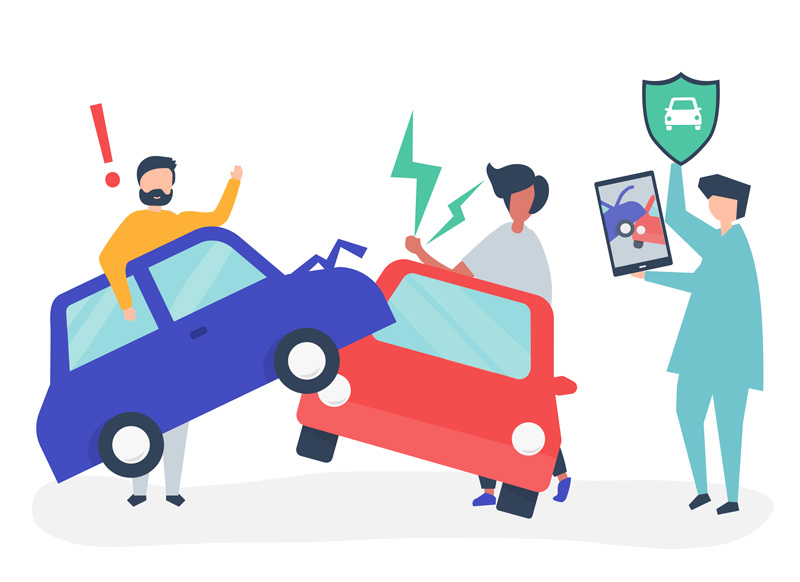Anyone who has been in a car accident understands how terrifying it can be. It only takes a fraction of a second for anything to happen, and the repercussions might last for days. An accident can occur while driving in various ways, including a vehicle colliding with you, your vehicle colliding with another, someone jumping in front of your automobile, you losing control of your vehicle, and so on. Whatever the cause, the next few moments are tense, and it takes several minutes to absorb the reality of the situation.
Important Steps To Take When You Find Yourself In An Accident
Automobile accidents are widespread and occur when you least expect them. Unfortunately, accidents can happen to even the finest drivers. As a result, every motorist must understand what to do in the event of an accident. Taking the necessary precautions will keep you safe. In addition, it may assist you in ensuring that everything has been appropriately documented.
Step 1- Make Sure Everyone Is Safe
The first thing to do after an accident is to make sure that everyone involved is safe. The following are the measures to take:
- If possible, exit your vehicle and activate the emergency flashers.
- If the accident is more severe or if someone is wounded, dial 911 to have an ambulance and police officers arrive as soon as possible. Even if the collision was minor, you should contact the authorities to obtain a police record.
- Minor accidents should be reported to the non-emergency police hotline.
- Set up flares around the location to warn other cars of the hazard if you have them. If not, activate your danger lights.
- Stay at the accident scene until law enforcement has released you.
Remember that the safety and health of anyone involved in the accident take precedence over any financial concerns. Therefore take the required safety procedures as soon as possible.
Step 2- Gather The Right Information
After ensuring that everyone involved is safe, you must gather vital information. It is critical to keep your records in order. Keep crucial documents in your vehicle, such as your registration, proof of insurance, and the name and phone number of your insurance agent. It’s also a good idea to bring crucial medical information with you, such as known allergies and your doctor’s name.
Only exchange insurance documents and information once you begin the document exchange process. This keeps you from saying something that could subsequently be used against you. Here’s everything you need to know:
- Name and contact information
- Insurance company and policy number
- Driver’s license and license plate number
- Type, colour, and model of vehicle
- Location of the accident
Take photos or video of any damage to both automobiles, speak with witnesses, write down everything you remember about what happened, or even capture audio or video data. Also, keep track of injuries, road conditions, and anything else you think may have played a role in the collision. Note-taking applications or insurance company mobile apps can help document accident facts if you have a mobile device.
Step 3- Seek Legal Advice
Speak with an experienced injury attorney before giving a statement to the other driver’s insurance company or signing any forms. The sooner you retain the services of an accident attorney to assist you with your case, the better. In addition, a lawyer can assist you in dealing with insurance providers and ensuring that you obtain the reimbursement you deserve.
Furthermore, hiring the services of https://www.brookslawgroup.com/tampa/car-accident-lawyer/distracted-driving-lawyer/ can help you avoid a lot of the stress and frustration of being involved in a distracted driving accident. You’ll be able to concentrate solely on your rehabilitation. Many terms and procedures are unfamiliar to individuals who aren’t familiar with them, but the lawyer will guide you through the process. So you know exactly what to say and when to say it to achieve the best results.
Step 4- Notify Your Insurer and Start The Claims Process
Notifying your insurance agent is also a significant action to take following a car accident. In most cases, your insurance company will liaise with the other party’s insurance company to determine who will pay for the damage and any potential medical expenditures.
After speaking with their insured, the insurance company will make a second decision on whether or not to pay a claim. You should admit your fault to the investigating officer and your insurance provider if you were at fault. Only acknowledge responsibility if you are sure it was your fault.
Have all of your records with all of the critical information about your accident on hand. You’ll be better prepared to work for a resolution for your claim if you can keep everything organized.
Even the most experienced driver can become agitated after an accident, but following these measures will help you avoid unneeded worry. That way, you can concentrate on dealing with your insurance company to get your car fixed as quickly as possible.
